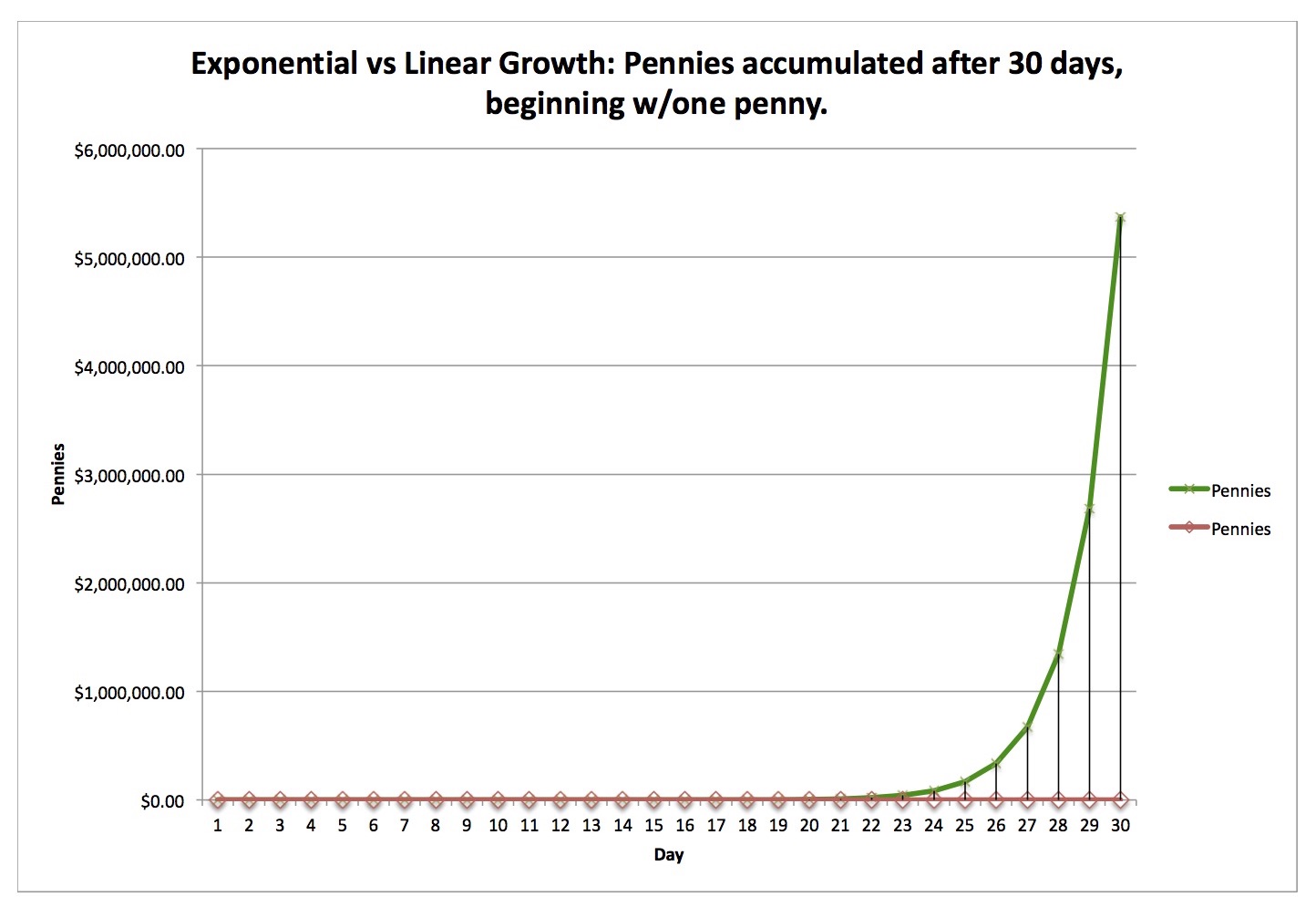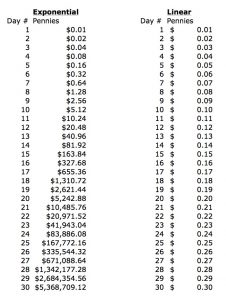Exponential growth can be good or bad, in other words, something can grow in either direction. I’ll get to that in a minute. Coronavirus is absolutely an example we’re all trying to wrap our minds around now, so we better understand EXPONENTIAL GROWTH!!!! But this also applies to other relevant topics in our renewable energy and sustainability circles. For the past little while I’d be driving in our Nissan Leaf EV amongst what feels like gazillions of ICE vehicles (that’s Internal Combustion Engine) amazed at how outnumbered I was and thinking this is hopeless. How can all ICE vehicles be rapidly displaced with vehicles powered by electricity and hopefully by renewables. How can EV charging infrastructure be massively scaled up and in a hurry? Ditto for transition of energy sources and models in general. Ditto for massive and speedy elimination of greenhouse gases. And, what about how quickly we could transition our societal mental models?
For any of this, anything involving change, exponential growth is the key. I just did this simple spreadsheet exercise. Start with one penny and double it each day for a month. How much money will you have? You’re thinking it couldn’t be that much could it? After all we’re starting with a penny!

Exponential growth can be good or bad. For example, we don’t want any sort of exponential growth in greenhouse gas emissions, right. Nor do we want exponential growth in coronavirus spread (though it’s likely to happen). Since we don’t know the real infection numbers because of lack of testing (as opposed to a penny, which is a clear cut number), it’s possible the actual growth rate in infection will skyrocket.
Coronavirus infection rate doubling time = 4 days [1]
What about linear change? We end up at the end of the month with thirty-cents, hardly worth the trouble. Plodding along. In the pennies example above, the difference between exponential and linear is indistinguishable for 20 days. Keep this in mind if you’re looking around and thinking that our problems are not moderate (as most politicians seem to believe). So exponential change is only a little harder than the plodding, and probably useless linear change. It’s harder the nearer we are to that inflection point where big change is about to happen. But as systems break down, and they are now, the opportunities for change present themselves.
In a culture that’s been so conditioned to “consume” and to reject science and logic, we now need to up the ante on our understanding of science, system dynamics, and how numbers actually work. Doing so should inform us that delaying (wasting time) necessary interventions is very costly.
—————-
[1] Based on what’s known now and confirmed by those with actual knowledge, “we’re flying blind into a storm” (Washington Post). I’ve heard this figure in reports the last couple days. Here’s a study from China on doubling times there.